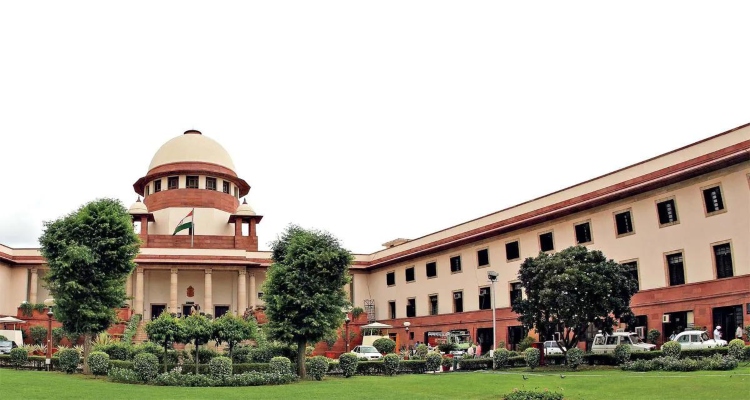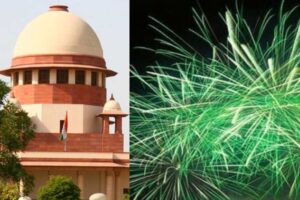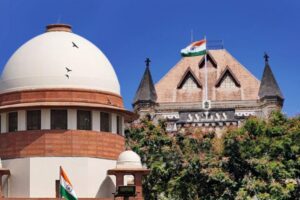
In a setback for the Central Government, the Supreme Court ruled on Thursday that royalties payable on minerals are not classified as a tax. The Court affirmed that states have the legislative authority to impose taxes on mines and mineral-bearing lands.
This verdict will benefit mineral-rich states such as Jharkhand and Odisha, which had urged the top court to resolve the issue of recovering taxes worth thousands of crores levied by the Centre on mines and minerals.
The states requested that the verdict be applied retrospectively to ensure a refund of the taxes from the Centre. However, Solicitor General Tushar Mehta, representing the Centre, strongly opposed this request and argued that the verdict should be applied prospectively. A nine-judge bench led by Chief Justice DY Chandrachud instructed the Centre and the states to submit written arguments on this matter and stated that it would decide on the issue on July 31.
Majority Verdict
In an 8:1 majority verdict, the nine-judge Constitution bench concluded that royalty payable on minerals is not a tax. Chief Justice DY Chandrachud, delivering the verdict on behalf of himself and seven other judges, asserted that Parliament does not have the authority to tax mineral rights under Entry 50 of List II of the Constitution.
Reading the key points of the majority verdict, the CJI stated that the 1989 verdict of the Supreme Court’s seven-judge Constitution bench, which held that royalty is a tax, was incorrect. “Royalty is not in the nature of a tax; it is a contractual consideration paid by the lessee for the mining lease. Both royalty and dead rent do not exhibit the characteristics of a tax. The judgment in India Cements (1989 verdict) holding royalty to be a tax is overruled,” the CJI said.
Royalties are payments made by the user to the owner of an intellectual property or real property asset. Under Entry 49, states have the power to levy taxes on lands and buildings, while Entry 50 permits states to impose taxes on mineral rights, subject to any limitations imposed by Parliament concerning mineral development.
The CJI emphasized that the Mines and Minerals (Development and Regulation) Act (MMDR Act) of 1957 does not restrict states from imposing taxes on mines and mineral development. “There is no specific provision in the MMDR Act that limits the taxing powers of the states. Royalty under the MMDR Act is not a tax,” the bench said, adding, “States have legislative competence to tax mines, minerals, and mineral-bearing land.”
At the outset, the CJI noted that the bench delivered two separate verdicts, with Justice B V Nagarathna presenting dissenting views. In her dissent, Justice Nagarathna argued that states do not have the legislative competence to levy taxes on mines and mineral-bearing lands.
Background of the Case
The bench addressed the contentious issue of whether the royalty payable on minerals is a tax under the MMDR Act and whether the Centre alone has the power to levy such exactions or if states also have the authority to impose levies on mineral-bearing land within their territory. Besides the CJI and Justice Nagarathna, the bench included Justices Hrishikesh Roy, Abhay S Oka, JB Pardiwala, Manoj Misra, Ujjal Bhuyan, Satish Chandra Sharma, and Augustine George Masih.
The nine-judge bench of the apex court began hearing the complex matter on February 27 due to two apparently conflicting constitution bench decisions on the issue. The case originated from a dispute between India Cement Ltd and the Tamil Nadu government. India Cement, which secured a mining lease in Tamil Nadu, was paying royalty to the state government. The state government then imposed a cess in addition to the royalty, prompting India Cement to move the Madras High Court against the measure, arguing that a cess on royalty constituted a tax on royalty, which was beyond the state’s legislative competence.
The Tamil Nadu government contended that the cess was a form of land revenue and on mineral rights, which it was empowered to impose. A seven-judge bench had ruled in favor of India Cement in 1989, holding that the Centre was the primary authority under the MMDR Act and that states could collect royalty under the MMDR Act but could not impose further taxes on mining and mineral development.
However, in 2004, a five-judge constitution bench, while hearing another dispute over the imposition of cess on land and mining activities between the state of West Bengal and Kesoram Industries Ltd, determined that there was a typographical error in the 1989 verdict and that royalty was not a tax. The phrase “royalty is a tax” was meant to read “cess on royalty is a tax,” and the 1989 judgment held that royalty is not a tax.
Over 80 more petitions were filed in the Supreme Court over the years, and since the India Cement matter was dealt with by a seven-judge bench, the matter was referred to a nine-judge bench to determine whether royalty is a type of tax or if there was an error in the India Cement case judgment. During the eight-day-long hearing, states defended their right to impose taxes on land and mineral activity, while the Centre, mining companies, and public sector undertakings argued that only Parliament could impose taxes on minerals under the MMDR Act, leaving states without the power to levy any taxes on mines and minerals.




